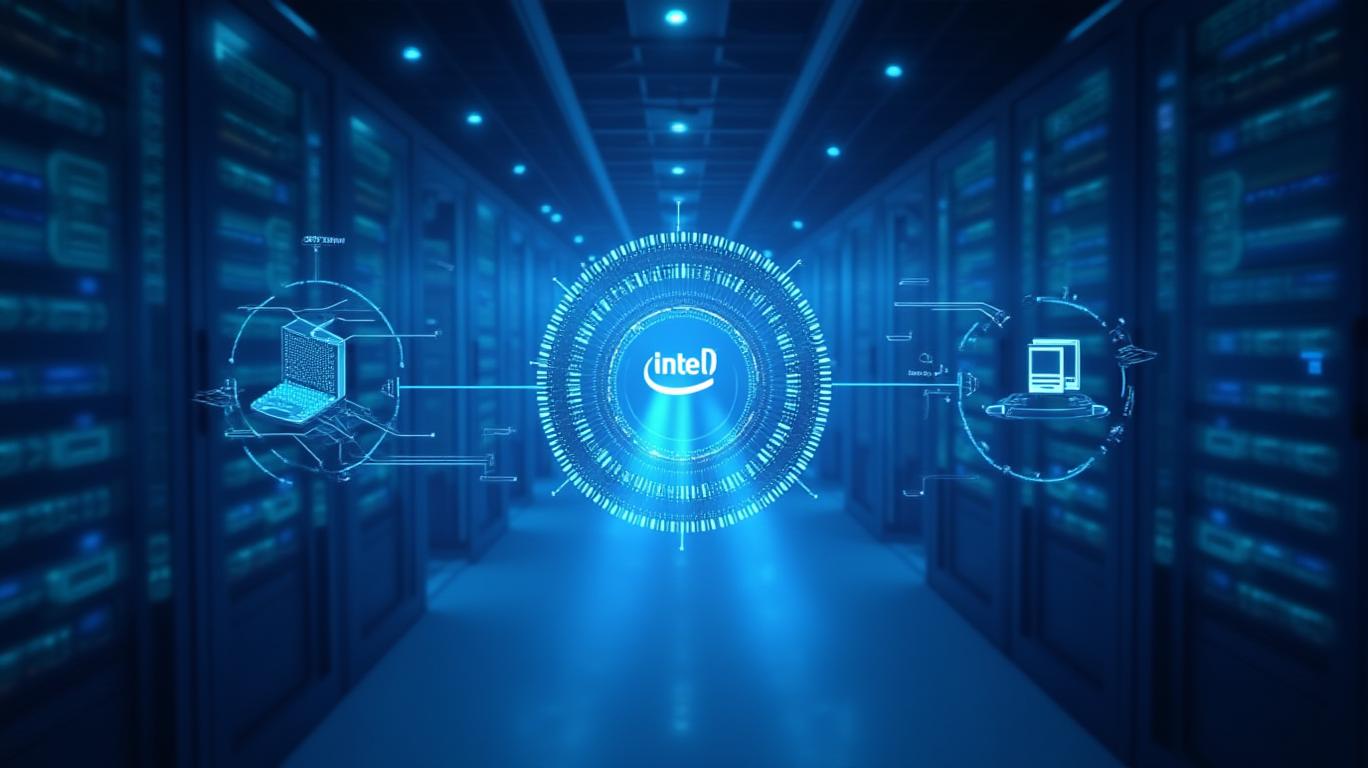Intel’s Restructuring Play: Hidden Value in a Shifting Semiconductor Landscape
The semiconductor industry is undergoing a seismic shift, with players like
and AMD betting big on AI-driven growth while Intel repositions itself through aggressive restructuring. The company’s recent reorganization of its Networking and Edge Group (NEX) into existing divisions—rather than outright divestiture—has sparked debate: Is this a calculated pivot toward high-margin AI/cloud chips, or a retreat from critical 5G/AI-era segments? For investors, the answer hinges on valuation metrics, peer comparisons, and Intel’s ability to unlock hidden value from non-core assets.
The Restructuring Play: Slimming Down for Growth?
Intel’s Q1 2025 move to integrate NEX into its Client Computing Group (CCG) and Data Center & AI (DCAI) division reflects CEO Lip-Bu Tan’s “startup mindset” strategy: eliminate redundancies, focus on core strengths, and monetize non-core assets. While the NEX division itself wasn’t sold, Intel’s sale of its NAND business to SK hynix and a 51% stake in Altera (FPGA) to Silver Lake raised $8.75 billion in divestiture proceeds. These moves align with sector trends:
- Peer Comparison: NVIDIA’s vertical integration (AI chips + software) and AMD’s hybrid strategy (CPUs + GPUs) prioritize scale and ecosystem control. Intel’s restructuring, however, centralizes resources around its crown jewels—DCAI’s AI/data center chips and CCG’s client computing leadership—while monetizing stagnant assets like NAND.
- Valuation Implications: The sale of Altera’s majority stake alone implies a 22% premium over its 2024 valuation, suggesting Intel’s non-core assets may have been undervalued on its balance sheet. This underscores a buy thesis if proceeds fuel R&D or dividends.
The Growth Opportunity Cost: Networking & Edge in the 5G/AI Era
Critics argue that folding NEX into CCG and DCAI risks ceding market share to rivals like Marvell (5G infrastructure) and NVIDIA (edge-AI software). The edge computing market is projected to grow at 17% CAGR through 2030, driven by autonomous systems and smart factories. Intel’s decision to integrate edge into CCG—a division facing 8% YoY revenue declines—raises questions about prioritization:
- Strategic Risk: If edge computing underperforms within CCG, Intel could miss out on high-margin IoT and industrial applications. Contrast this with NVIDIA’s CUDA ecosystem, which locks in edge/AI developers.
- Near-Term EBITDA Impact: The restructuring’s financial results are mixed. DCAI’s margins hit 13.9% in Q1 2025, a 200-basis-point improvement, but CCG margins dipped to 30.9% due to inherited edge losses. Divestiture proceeds, however, boosted cash reserves by ~$10 billion, reducing debt and improving liquidity.
Why Now Is the Time to Buy (or Caution?)
The restructuring’s success hinges on two variables:
- Core Business Execution: Can DCAI sustain its margin gains while capitalizing on AI’s hypergrowth? Intel’s 18A manufacturing node (due in H2 2025) could give its AI chips a performance edge.
- Non-Core Asset Valuation: If Intel’s divestitures realize fair value (e.g., NAND at $15 billion pre-sale vs. SK hynix’s $8.75B valuation), it signals undervaluation—a compelling buy trigger.
The Bull Case:
- Proceeds fund $18 billion in 2025 CapEx (down from $20B) to prioritize AI/data center R&D.
- A streamlined Intel becomes a cash flow machine, with DCAI’s margins approaching NVIDIA’s 40%+ levels.
- The stock trades at 12x forward EV/EBITDA—a discount to AMD (18x) and NVIDIA (25x)—despite its dominant x86 ecosystem.
The Bear Case:
- Edge/AI underperformance in CCG/DCAI leads to market share losses.
- Rivals like AMD (with its hybrid CPU/GPU strategy) or Marvell (5G networking) outpace Intel’s fragmented focus.
Final Analysis: A Calculated Gamble with Hidden Upside
Intel’s restructuring isn’t a divestiture but a strategic reallocation—a blend of asset monetization and operational focus. While risks exist in ceding edge/5G ground, the proceeds and valuation gaps create a compelling entry point. Buy Intel if:
- You believe in its AI/data center dominance.
- You see non-core assets as undervalued on its balance sheet.
- You’re willing to ride near-term margin volatility for long-term cash flow gains.
The jury’s out, but the math leans bullish: Intel’s moves align with sector reallocation trends, and its undervalued non-core assets could unlock $5–7B in hidden value. For investors, this is a strategic call—not a retreat.
Recommendation: Buy Intel (INTC) with a 12–18 month horizon, targeting a 20% upside to $45/share. Monitor DCAI’s margin trends and edge computing revenue splits in Q2 2025 earnings.
Disclosures: This analysis assumes no insider information and relies on publicly available data.

Comments
No comments yet